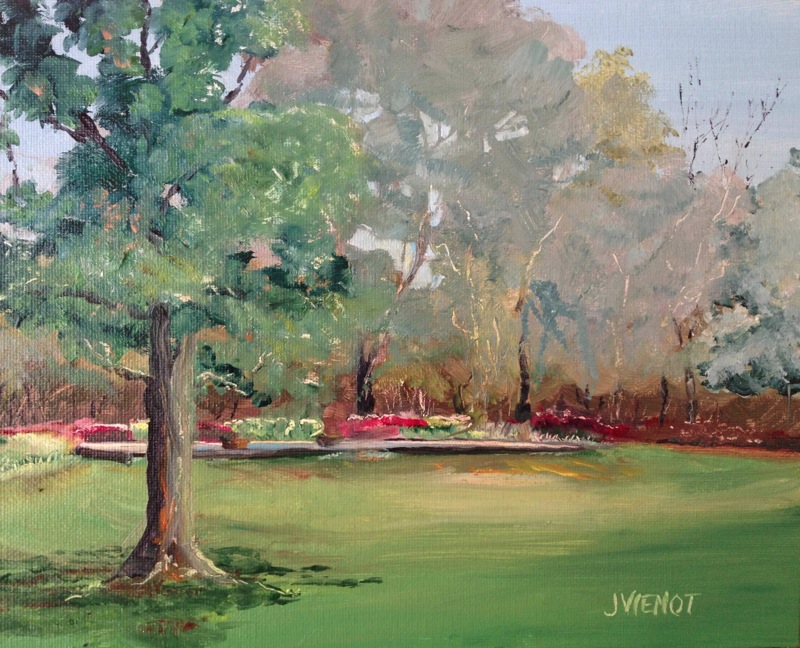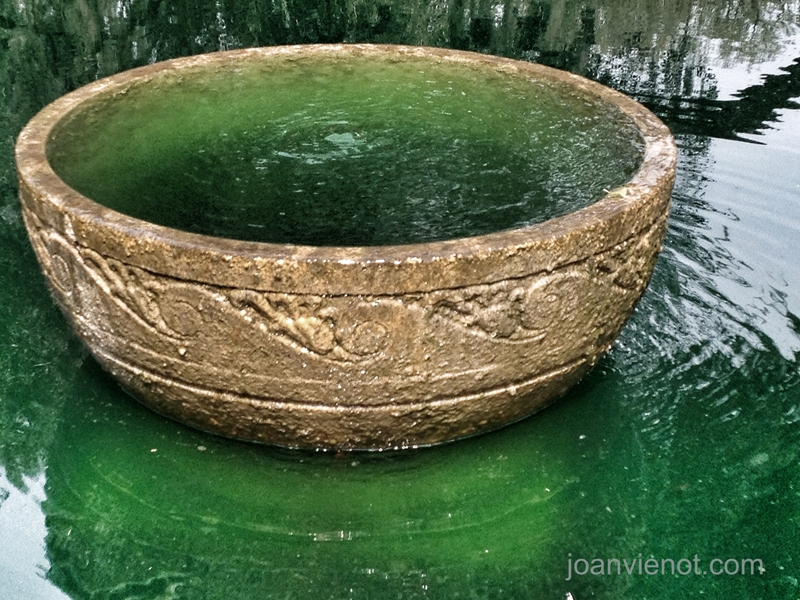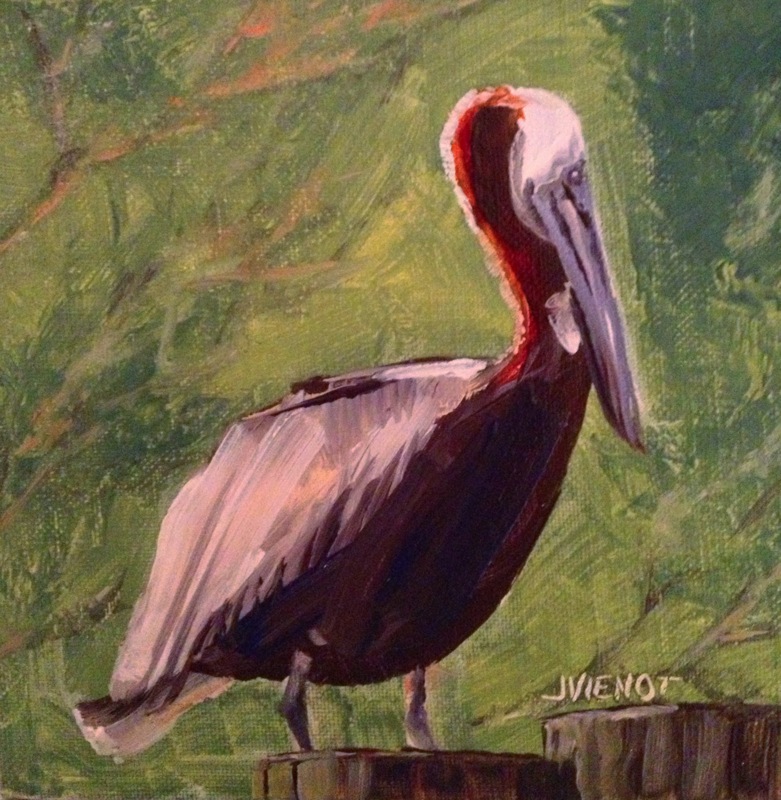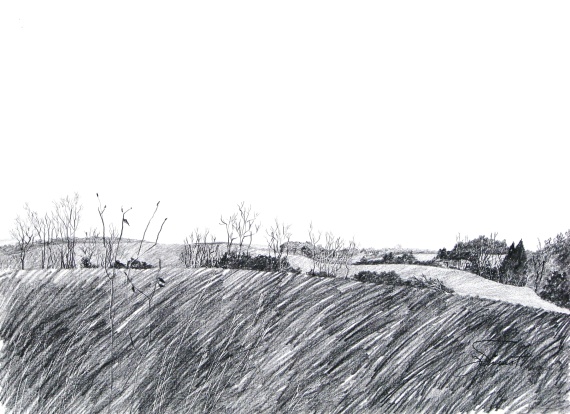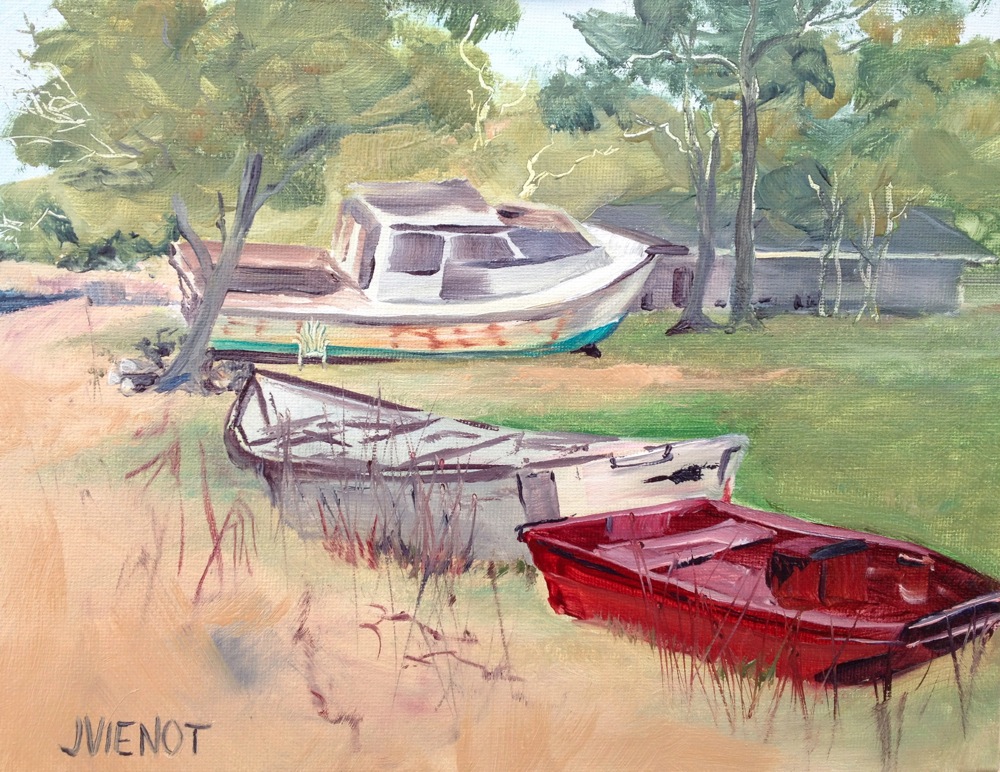

Today the Emerald Coast Plein Air Painters painted at Nick’s Restaurant on the north side of the Choctawhatchee Bay. When I first arrived, one other painter was already setting up. I walked around the derelict boats and dinghies decorating the grounds, following the Bay beach to the inlet and then up around the aged structure of the restaurant itself, shooting photos with my iPhone as I went. A painting could be made from everywhere I looked. I settled on the old boats lined up in the front yard. By the time I had gotten my easel set-up and made a preliminary pencil-on-paper sketch to try to lay-out my composition, about 10 to 12 more artists had arrived.
Most boats around here are white, but the boat in the foreground was red, and that color was the element that interested me. I painted nearly every other part of the picture first, saving the red boat for last. But as I worked, I cursed my choice of subject matter, having once again chosen to paint boats, which I know almost nothing about. My biggest struggle was with the shape of the boat in the background. The cabin morphed into an odd shaped roof over what I presume might have been sleeping quarters, but which now sported a gaping hole, a mate to the hole in the deck at the back of the boat. Its one redeeming feature, besides its mass, was the turquoise color of the bottom.

A tiny sliver of the Bay on the far left, and a nondescript structure in the background were the only hints at the location, but anyone who has eaten at Nick’s will recognize the boats. The sandy beach was dotted with little grasses and vines, and I took liberty with that part of the painting, bringing in a few taller grasses, to break up the large area of plain beach, and to repeat a few reds.
When we lined up our paintings for the critique before lunch, I again was amazed and overwhelmed by the talent in the group. One of the artists made a comment that caught my curiosity. He was expressing frustration about a car pulling up and blocking his view, after he had already mixed all his colors and was ready to paint. I have never approached my painting that way, instead mixing my colors as I go. I may have to watch him paint sometime, to see how that works.
Most of my images are available for purchase. Contact me if you are interested. — Joan Vienot

